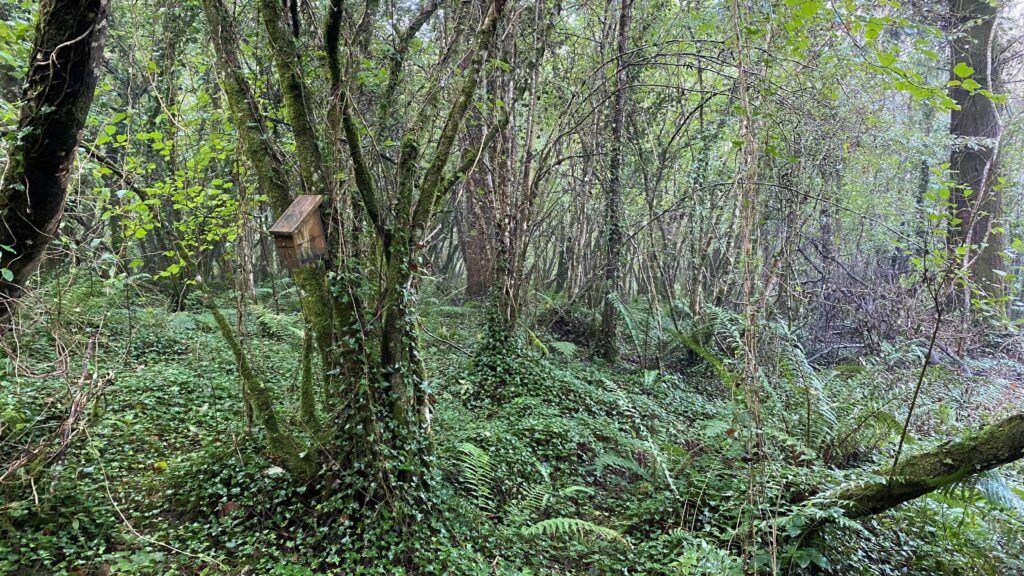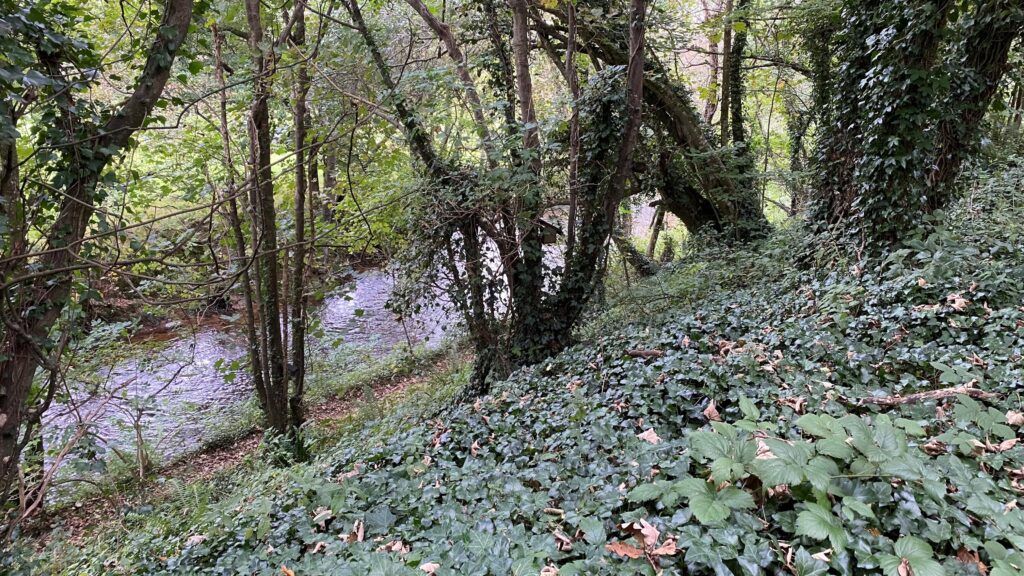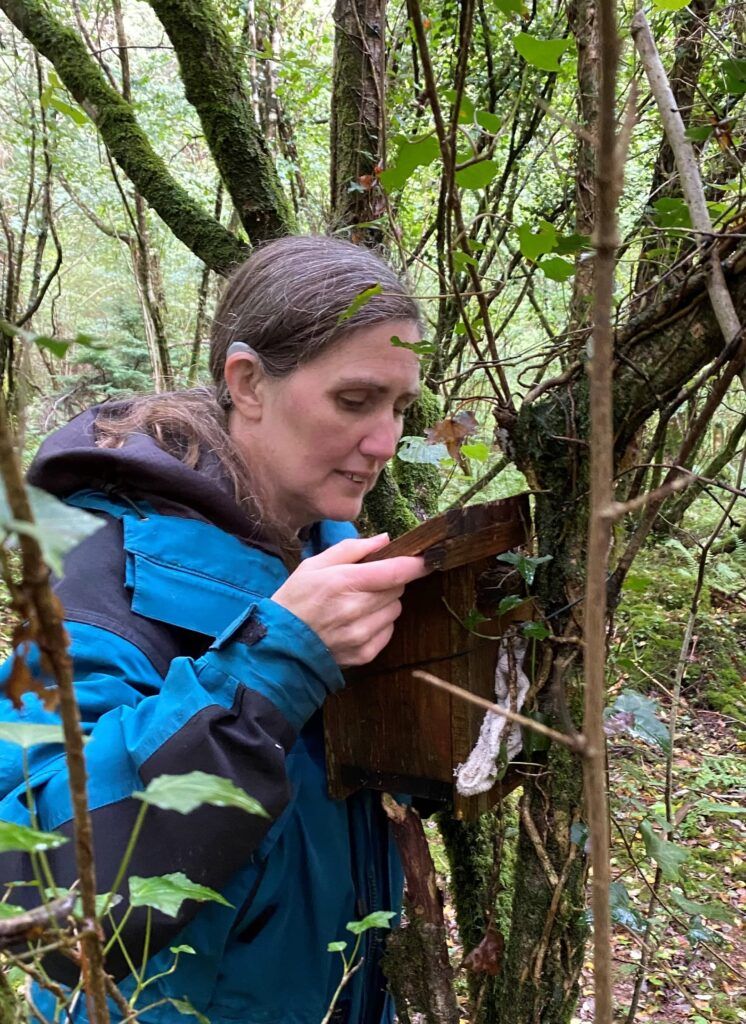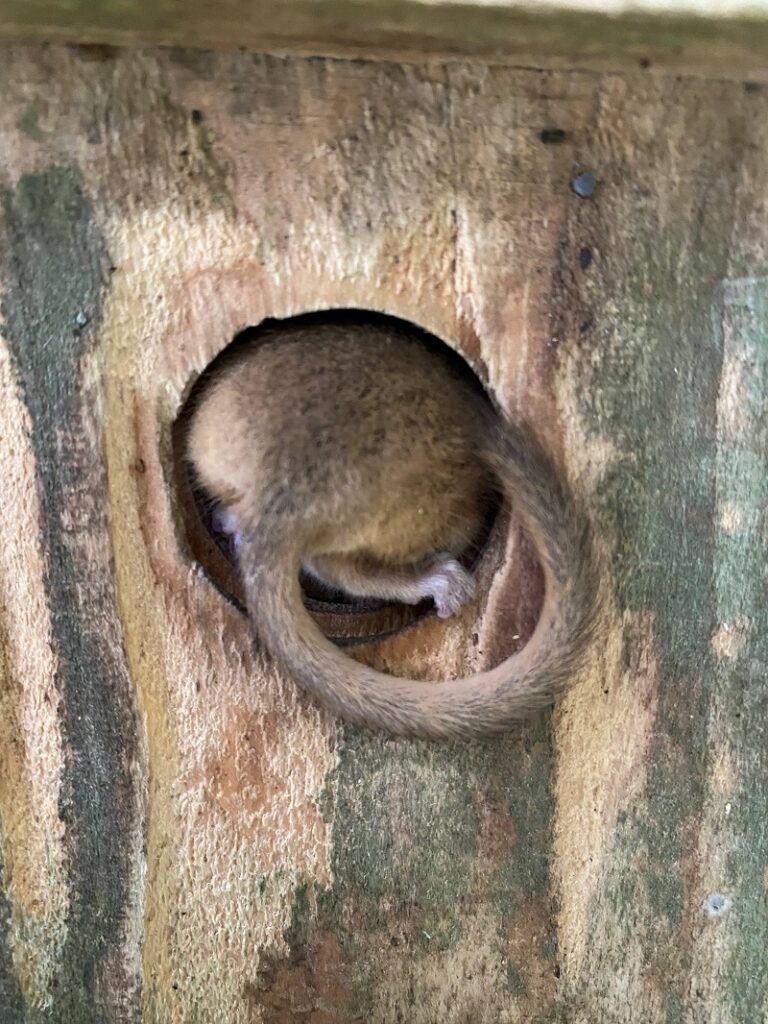Meet Nikki Curzon: dormouse monitor
In this series, we chat to the dedicated staff members, conservation partners and volunteers at PTES. We find out why each of them chose a career in wildlife conservation, what they find rewarding about their work and what they love most about what they do.
Nikki Curzon
Dormouse monitor in Devon
Tell us about yourself and how you got involved in monitoring dormice
I’ve been monitoring dormice for about eight years but it all happened by chance. We bought a property with a few acres in the Avon Valley, South Devon, which just happened to be an NDMP site. It seemed strange to ask someone else to monitor the boxes, so I set about getting my licence! I’m not an ecologist and I don’t work in a wildlife orientated job, but I love the outdoors and nature, and I really enjoyed training with local specialists, including the renowned Tom Maddock.
One of the sites Tom monitored was Moorgate, on the southern edge of Dartmoor. Moorgate was one of the original dormouse monitoring sites where HG Hurrell and family lived. It was also where HG Hurrell and his daughter Elaine first noticed the distinctive manner in which dormice nibble hazelnuts that we all look out for today.
Tell us about the area you monitor


In 2017, the Devon Wildlife Trust offered me another private site to monitor and this has proved excellent for dormice; many more animals are spotted here than at my own site. My site is next to the River Avon and is an established ancient woodland. The other site is a predominately hazel block within a mixed woodland, and is further away from the river. Another key difference between the two sites is that I have many resident wood mice and shrews, which makes me think dormice are the more timid species.
What’s the most fascinating encounter you’ve had with dormice?
Dormice never cease to amaze me; they don’t read the text books so you should always expect the unexpected! During my September check last year, I saw a dormouse run up a tree for the first time and sit and watch us weigh the other dormouse we found in the box! It’s so easy to get carried away inventing a story about each one… Was this a mate, sibling or parent that had popped out of the box? Would they return to the box? Some time ago, near this same spot, we kept finding Mrs Half-a-tail and wondered how she’d lost the tip and if her two babies survived. Watching someone see their first dormouse is a truly magical experience; dormice are so calm and serene compared with other small mammals, and are an absolute delight to watch even when curled up in a torpid state.
What do you enjoy most about being a dormouse monitor?
I know I still have lots to learn about these tiny creatures but for now I’m just enjoying passing on my knowledge to others, whether that’s friends, relatives (my 13-year-old daughter is great at identifying dormice) or the trainees who join me… I just hope I make as good a teacher as those who taught me. Happy Dormousing everyone!
Header image credit Lorna Griffiths


